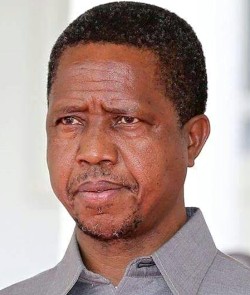 The Republic of Zambia (or "Zambia" for short) is a landlocked country situated on a high plateau at the crossroads of Central, Sourthern and Eastern Africa. The name "Zambia" comes from the Zambezi river which drains all but is a small northern section of the country. The Zambezi river is located at about 1079 feet above sea level and is Zambia's lowest point.
The Republic of Zambia (or "Zambia" for short) is a landlocked country situated on a high plateau at the crossroads of Central, Sourthern and Eastern Africa. The name "Zambia" comes from the Zambezi river which drains all but is a small northern section of the country. The Zambezi river is located at about 1079 feet above sea level and is Zambia's lowest point.
The Republic of Zambia borders the Democratic Republic of Congo to the north, the Republic of Tanzania to the north-east, the Republic of Angola to the west, the Republic of Malawi to the east, the Republics of Zimbabwe, Botswana, Mozambique and Namibia to the south.
One of the seven natural wonders of the world, Victoria Falls, is located at the border between Zambia and Zimbabwe.
The Republic of Zambia has a total land area of about 752,618 squared kilometers (with about 9220sq km covered by water). Just about 5.1% of Zambia's total land area remains arable (land good for farming).
The Republic of Zambia has a total population of about 18 million people with the population growth rate around 3.1%. About 36% of Zambia's population lives in major cities and towns such as Lusaka, Kitwe and Ndola. Lusaka the capital of Zambia contains about 3 million people. Kitwe, the second largest city, contains about 750,000 people while Ndola is home to about half a million people.
There are so many ethnic and racial groups living in Zambia today with black Africans (including, Bemba, Lozi, Tonga, Lala, Ngoni, Chewa, Nsenga, Kaonde, Lunda, etc) forming about 99.5% of the total population. Europeans, Americans, and Asians make up the remaining 0.5% of the total population. Zambia is a christian-dominant country with about 50-75% of the total population being Christians. Muslims and Hindus together make up about 24-49% of the total population. Indigenous believers make up the remaining fraction of the population.
About from English Language, there are several official and unofficial languages spoken in Zambia today. About 30.1% of the total population do speak and understand Bemba (the most dominant official language in Zambia today). A significant portion (about 22%) of the population also speaks and understands either Nyanja, Tonga, or both official languages. Lozi (another official language) is spoken by about 6% of the total population, followed by Chewa (about 4.9%), Nsenga ( 3.4% of the total population), Tumbuka (about 2.5%), Lunda (official language. spoken by about 2.2% of the population) ,Kaonde (official) 2%, Lala 2% of the total population, Luvale (official) about 1.7%, etc.
The Republic of Zambia just like its neighboring countries is blessed with abundance of natural resources such as gold, silver, copper, uranium, hydropower, zinc, cobalt, coal, lead, etc.
The Republic of Zambia has a literacy rate of about 80.6% for the total population with the female literacy rate hovering around 74.8%. In other words, about 80.6% of the total population of Zambia above age 15 can at least read and write.
However, despite the abundance of natural resources and the high literacy rate, about 64% of the total population of Zambia lives below the international poverty line. Despite the high literacy rate, quality education is very hard to come by in Zambia today. In other words, people graduate from school with degrees and certificates but unable to apply the knowledge to better themselves and their communities. This is a major problem in almost all African countries. Extreme poverty and hunger remain a top issue in Zambia today. Poverty, especially in rural areas is driving many children of school-going age out of school. Most of these school droupouts end up on the streets of major cities and towns hawking, stealing, prostituting, etc.
The Republic of Zambia remains one of the top 10 HIV/AIDS killing zones in Africa today with HIV/AIDS adult prevalence rate of about 13.5%. More than 980,000 people were living with HIV/AIDS in 2009 with about 45,000 deaths recorded in the same year. Little has changed.
Deforestation (rampant cutting down of trees mainly for timber, firewood and charcoal), poaching, periodic droughts and land degradation, tropical storms (from November to April), etc. are some of the major environmental issues facing Zambia today.
Just like in most other African countries today, poor leadership and corruption continue to tear Zambia apart.

